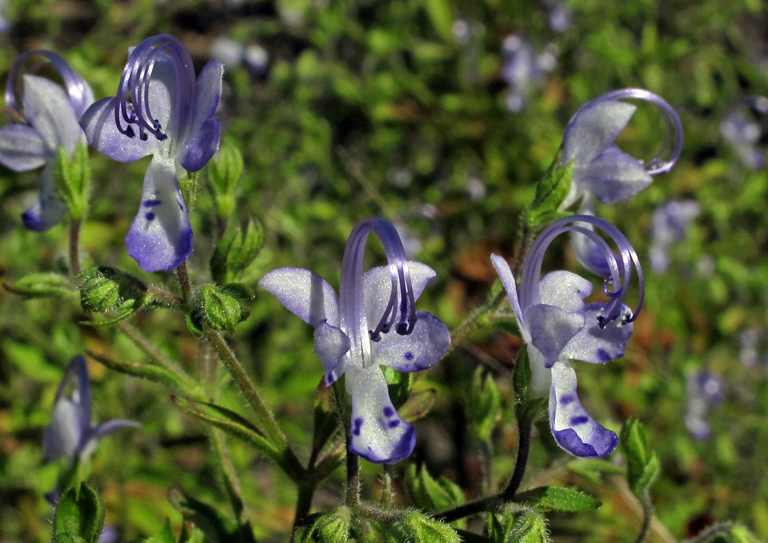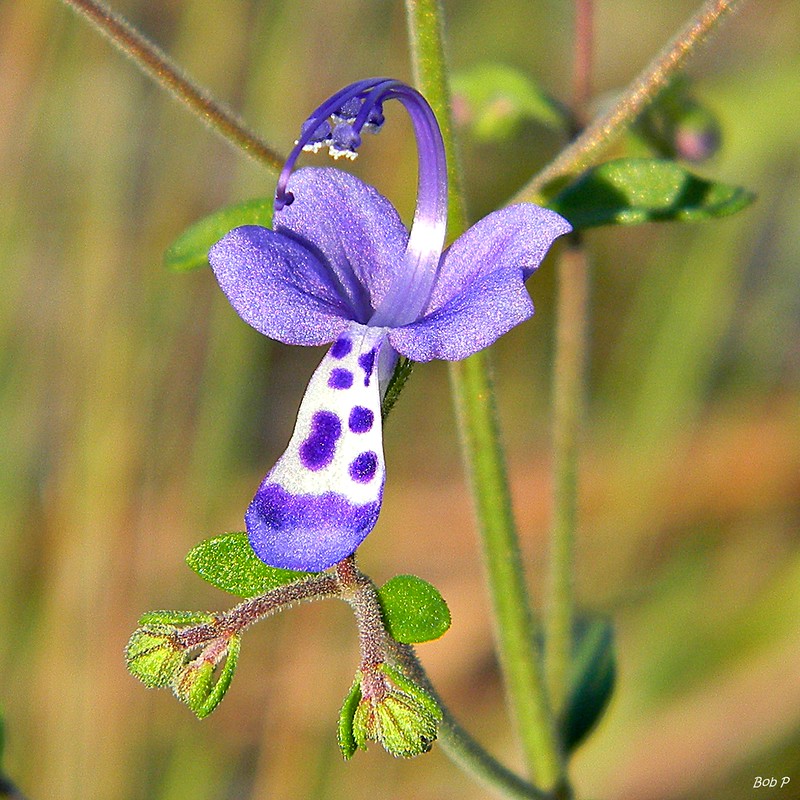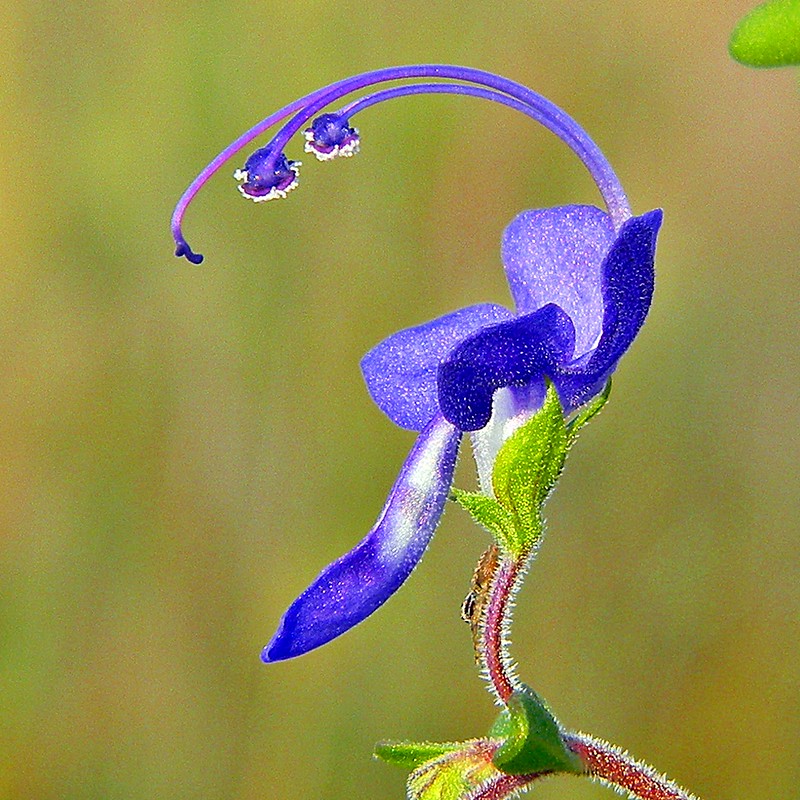Forked bluecurls
Pictured above: Forked bluecurls (Trichostema dichotomum) by Alan Cressler, Lady Bird Johnson Wildflower Center. Click on terms for botanical definitions. View post as a PDF.
Forked bluecurls (Trichostema dichotomum) is an herbaceous to woody annual that bears dainty yet distinctive bluish-purple blooms. Flowers are two-lipped; the lower lip is white with purplish spots and tips. Stamens are long, purple and obviously curled. Leaves are narrowly elliptical and oppositely arranged. Stems are pubescent.
Flowers are short-lived, opening only in the morning, but individual plants may produce thousands of flowers throughout a season. It also has a particularly long flowering season, typically beginning in late summer and lasting through late fall, although flowering can continue into winter and sometimes even spring, depending on conditions. It tends to flower heaviest as the weather starts to get cooler.
Forked bluecurls occurs naturally in sandhills, pine flatwoods, and open hammocks, as well as in disturbed areas throughout Florida. It is attractive to many pollinators, but especially to bees. In 2023, researchers identified 7 new Trichostema species in Florida, learn about them here.
Family: Lamiaceae (Mint family)
Native range: Throughout Florida
To see where natural populations of Forked bluecurls have been vouchered, visit florida.plantatlas.usf.edu.
Soil: Well-drained, sandy soils
Exposure: Full sun to minimal shade
Growth habit: 1–3’ tall, 1–2’ wide
Propagation: Seed, cuttings
Florida regions of landscape suitability: North, Central, South
Garden tips: Forked bluecurls is an ideal addition to a home landscape. It can be propagated by seeds or cuttings. It is a prolific self-seeder and spreads quickly, so it may require thinning to keep in check.
Forked bluecurls is sometimes available at nurseries that specialize in native plants. Visit PlantRealFlorida.org to find a native nursery on your area.
Learn more about Forked bluecurls from the Florida Native Plant Society and the Institute for Regional Conservation.



